Last Updated on August 1, 2022
[ヴィーガンしめじのお味噌汁]
Vegan Shimeji Mushroom Miso Soup is a perfect way to appreciate the umami-rich taste of shimeji mushrooms in savory Japanese miso soup. In fact, shimeji miso soup is one of a popular miso soups in Japan especially in the Fall. It’s impressive how much umami from the shimeji steeps into the miso soup without using any vegan dashi or broth. A little hack is all it takes to make this soup extra flavorful than otherwise!
What’s Shimeji Mushroom?
Types
You can find more information on my Shimeji Mushroom post in the Vegan Japanese Pantry Guide.
Shimeji is a Japanese word for “beech” mushroom in English. There is a variety of shimeji mushrooms in the category and the ones that we’re typically referring to are:
- Hon-Shimeji
- Buna-Shimeji
- Brown Buna-Shimeji
- White Buna-Shimeji
Buna-shimeji is the most common type of shimeji mushrooms that we refer as “shimeji” mushrooms.
In the buna-shimeji category, there are two different kinds; brown and white. The brown one is more common than the white. I use white buna-shimeji for this vegan shimeji mushroom miso soup.
Taste
The overall taste of buna-shimeji is somewhat light and mild in other words, there’s no strong or distinctive taste to counterpart with other ingredients to cook with. However, when it comes to the essence of eating mushroom, the umami flavor to be exact, shimeji has a very high profile in its umami element!
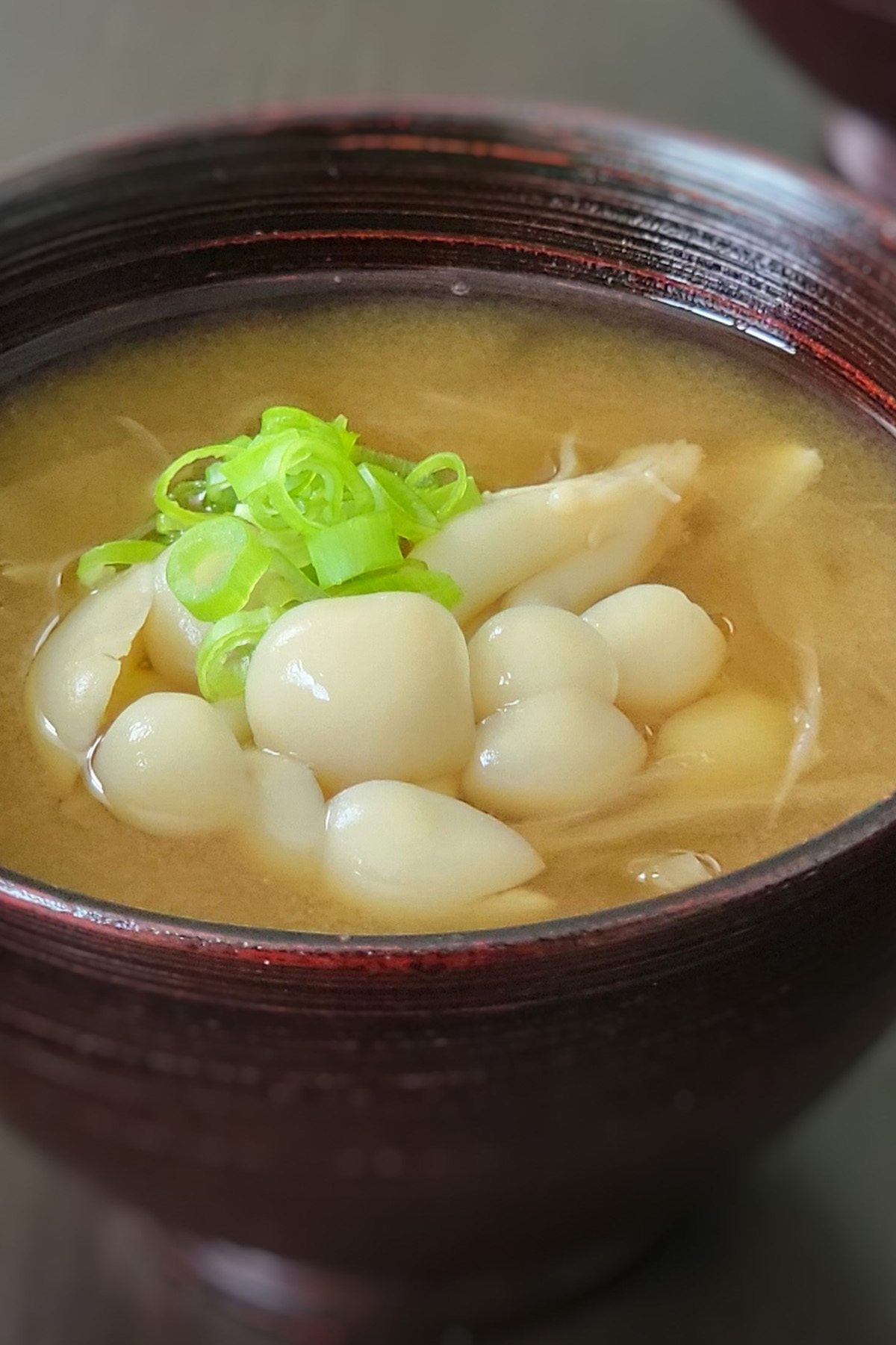 Shimeji is very rich in particular flavor of umami taste which is very similar to shellfish. For that reason, it provides a truly delicious umami-rich taste in making soups. In other words, it’s a perfect mushroom to use to mimic clam-like taste vegan “seafood” broth. To be honest, it’s too similar in flavor that it can be a bit scary at the moment you taste it.
Shimeji is very rich in particular flavor of umami taste which is very similar to shellfish. For that reason, it provides a truly delicious umami-rich taste in making soups. In other words, it’s a perfect mushroom to use to mimic clam-like taste vegan “seafood” broth. To be honest, it’s too similar in flavor that it can be a bit scary at the moment you taste it.
I’ll talk about how to bring out the best flavor possible from shimeji which is a hack for this vegan shimeji mushroom miso soup recipe with no dashi!
Vegan Shimeji Mushroom Miso Soup
No Dashi Hack
You read it right. No dashi needed.
Trust me. If you do the hack for this vegan shimeji mushroom miso soup, you do NOT need any other dashi to rely on to give a strong background flavor. So what’s the hack?
Start cooking shimeji in cold water and slowly bring it up to a gentle boil.
Yes, that’s the hack to extract the vegan “seafood” like flavor from shimeji as a base for this vegan shimeji mushroom miso soup! In this case, when you start cooking shimeji and onion in cold water it gives a excellent dashi.
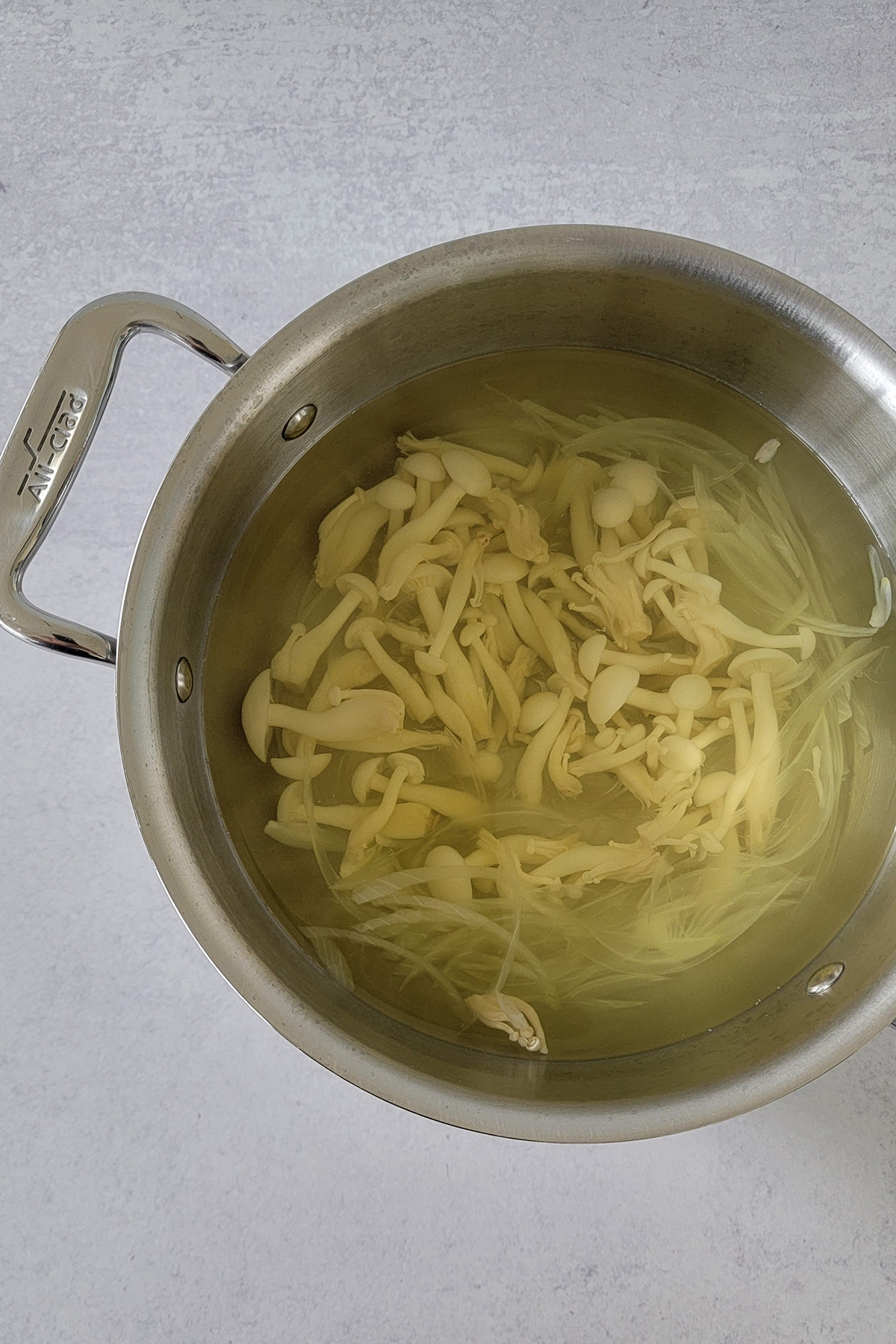 The shimeji releases its own umami into the soup as it’s slowly getting cooked and the natural sweetness of the onion adds another delicious layer to the soup. However, the onion also gives a good savory note to the soup as well.
The shimeji releases its own umami into the soup as it’s slowly getting cooked and the natural sweetness of the onion adds another delicious layer to the soup. However, the onion also gives a good savory note to the soup as well.
I use the same technique for making vegan Japanese sweet potato miso soup. You won’t believe how much flavors you can get out of simple ingredients!
Miso
Use high-quality and authentic Japanese miso.
It’s as simple as how it can be. Being Japanese, I use “real” miso for making miso soup. I’ve tried multiple different miso that I can get here in the US which they all taste different from one another. When you compare variety of miso, you can really taste the difference. For example,
- Saltiness
- Sweetness
- Tanginess
- Mild or strong
- Aged or less aged
- Presence or ratio of koji (malted rice)
- Base ingredient (soybeans, barley etc.)
The truth is that the flavor profile of the type of miso you use can really affect the final taste of the miso soup you make.
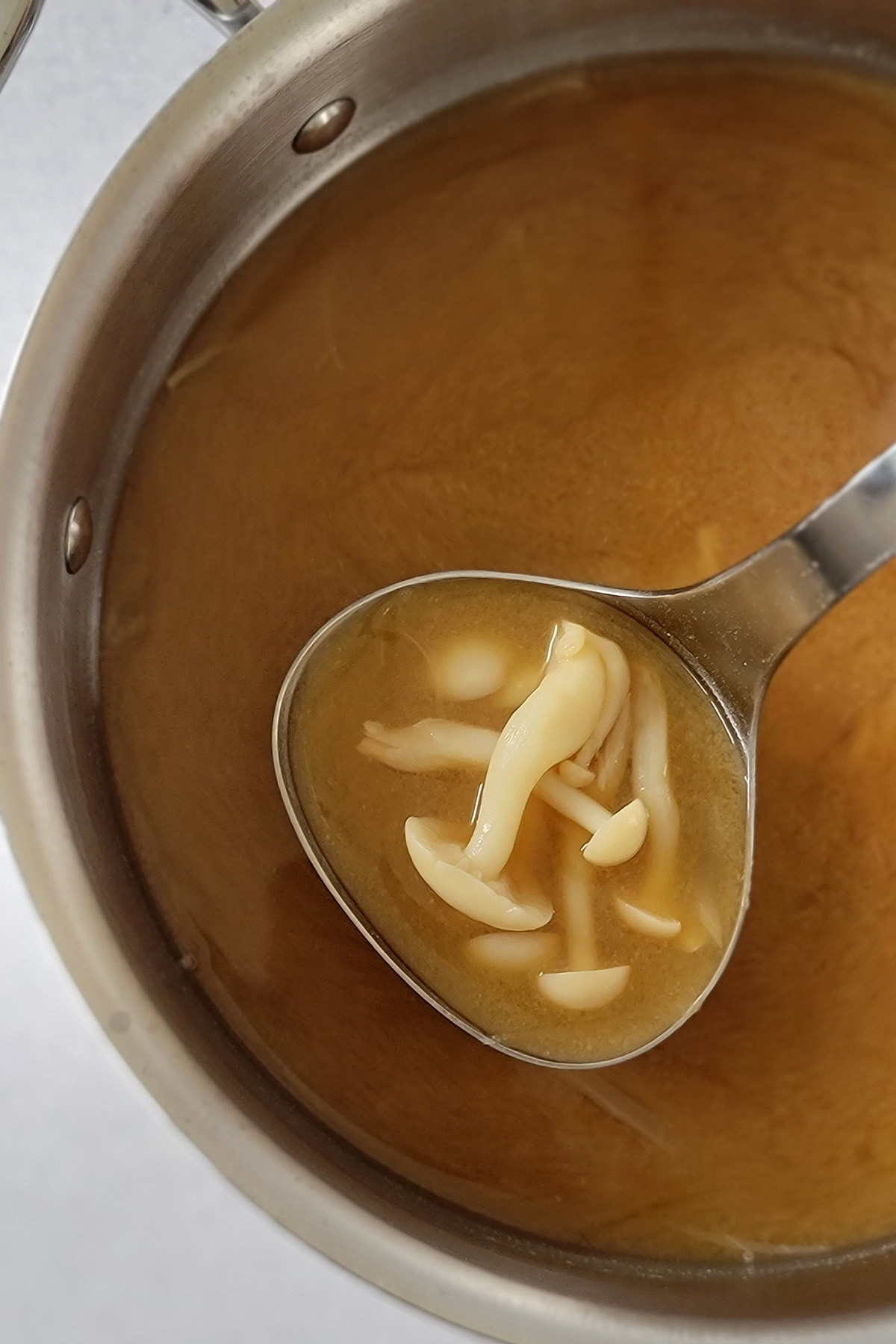 Of course, it’s all about your preference and what you pair the miso with. But just because it’s labeled as “miso” doesn’t mean that it’s just another miso. If you love miso soup but you’ve never tried all different types of miso to find “yours”, I really recommend doing so!
Of course, it’s all about your preference and what you pair the miso with. But just because it’s labeled as “miso” doesn’t mean that it’s just another miso. If you love miso soup but you’ve never tried all different types of miso to find “yours”, I really recommend doing so!
My go-to miso is koji miso (soybean-base miso with a substantial amount of rice koji) of any kind. It’s still savory but koji makes it slightly sweet! When it’s labeled as “koji miso”, it typically contains higher ration of rice koji which makes the miso sweeter.
I can find great selections of authentic Japanese miso at the rice factory New York.
How to Serve Shimeji Miso Soup
Miso soup is always served along side a bowl of rice with a couple of simple side dishes like nukazuke pickles! In order to truly enjoy and appreciate the flavor of the vegan shimeji mushroom miso soup, it’s best to serve with mild flavored dishes.
If you like a little heat, sprinkle of shichimi pepper adds a nice aromatic kick. This is optional.
How To Store Shimeji Miso Soup
Miso soup has the best flavor and the aroma right when it’s made. However, that doesn’t mean that you can’t store in the fridge for some leftovers. I do that all the time and I must say some leftover miso soups are pretty comforting and delicious!
You can transfer to a container with a lid and store in the fridge for up to 2-3 days. However, one thing to keep in mind is that leftover miso soup always gets saltier. When you eat again, make sure to taste to check the saltiness. If it’s too salty, simply add some water to dilute. Easy!
The consistency of any leftover miso soup may be slightly thicker and denser but still 100% safe to consume!
Be sure to check out the “Step-by-Step Instructions (w/ Photos)” after the Printable Recipe!
Vegan Shimeji Mushroom Miso Soup
Ingredients
- 4 cups purified water
- 4 oz white buna-shimeji (beech) mushrooms or brown, trimmed off the bottom and separated
- 1 cup thinly sliced yellow onion about 1/4 of medium onion
- 5 tbsp + 1 tsp koji miso or your choice of miso, adjust to taste
- 1 scallion finely chopped
Instructions
- In a medium pot, combine purified water, shimeji mushrooms and onion. Cover and cook over medium heat until a gentle boil (seethe “Notes” below for how to extract the flavor of shimeji.) Then reduce the heat to low and continue to simmer for 5 minutes.
- Turn off the heat. Add miso to the soup. To do this, place the miso on a ladle then partially submerge the ladle in the soup. Use chopsticks to slowly incorporate the soup into the ladle so miso can dissolve. Turn the heat back on to medium low and continue to simmer for a couple of minutes just enough to reheat.
- Stir and serve with scallions on top.
Notes
Shimeji
- I use the white buna-shimeji called Bunapi® from HOKTO.
- Bunapi® has no bitterness at all that exists in some brown buna-shimeji. Typically, white buna-shimeji has less bitterness.
- Feel free to use brown buna-shimeji or other shimeji alternatives.
- Be sure to trim off the bottom end before using.
Flavor Extraction of shimeji (and onion) to make “dashi”
- To extract the best flavor possible from shimeji, start cooking from cold water and cook slowly and never fully boil it. No need for kombu dashi or any other broth when you do this hack!
- The same works for onion which brings out the natural sweetness to the soup.
Choice of miso
- Taste profile of miso (sweetness and complexity) is completely different from one product to another. Find your favorite and adjust the amount to your preference.
- My go-to multipurpose miso is koji miso (soybean-base miso with a substantial amount of rice koji) of any kind. It’s still savory but koji makes it slightly sweet!
- Blended miso (of a couple of different types such as yellow or mellow white & red) is also a good choice.
Step-by-Step Instructions (w/ Photos)
Prep: Trim off the bottom of shimeji and separate them.
1. In a medium pot, combine purified water, shimeji mushrooms and onion.
Cover and cook over medium heat until a gentle boil. Then reduce the heat to low and continue to simmer for 5 minutes.
2. Turn off the heat. Add miso to the soup. To do this, place the miso on a ladle then partially submerge the ladle in the soup. Use chopsticks to slowly incorporate the soup into the ladle so miso can dissolve.
Turn the heat back on to medium low and continue to simmer for a couple of minutes just enough to reheat.
3. Stir and serve with scallions on top.
If you enjoy the recipe, please share, leave a comment below and tag us @plantbased_matters on Instagram! We appreciate your kind support 🙂
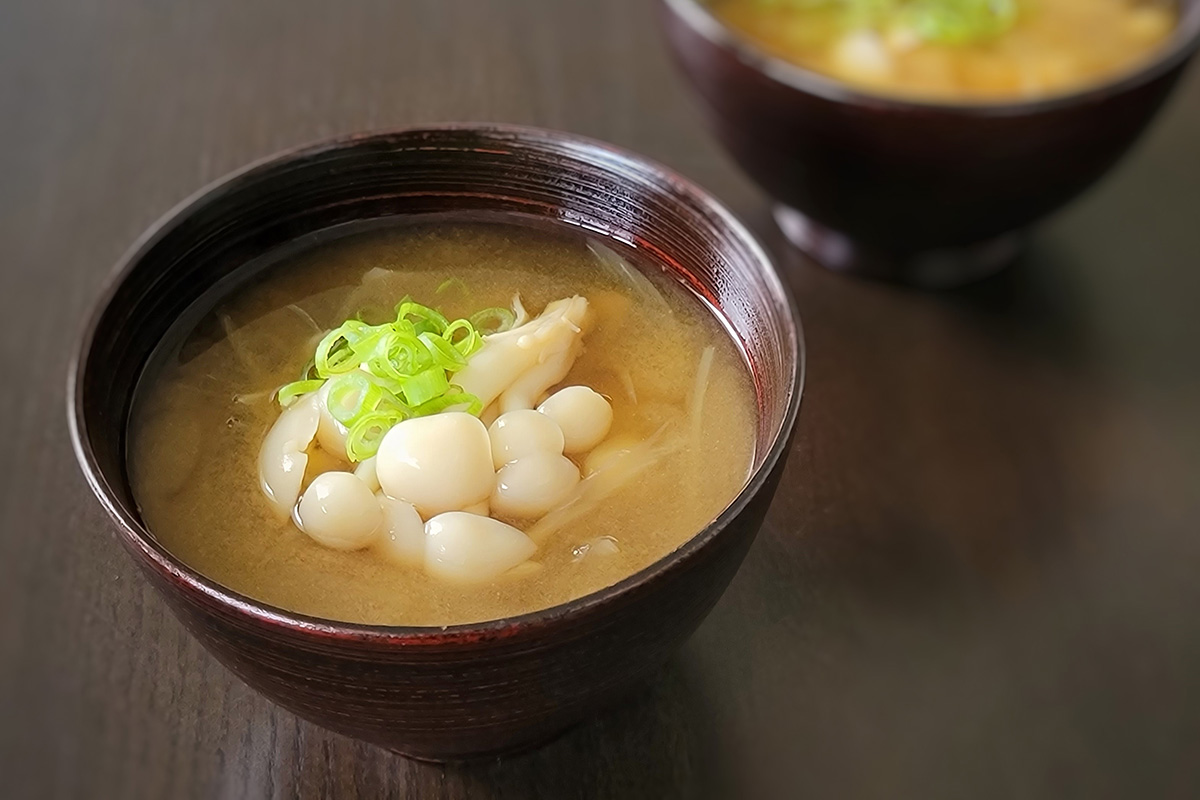
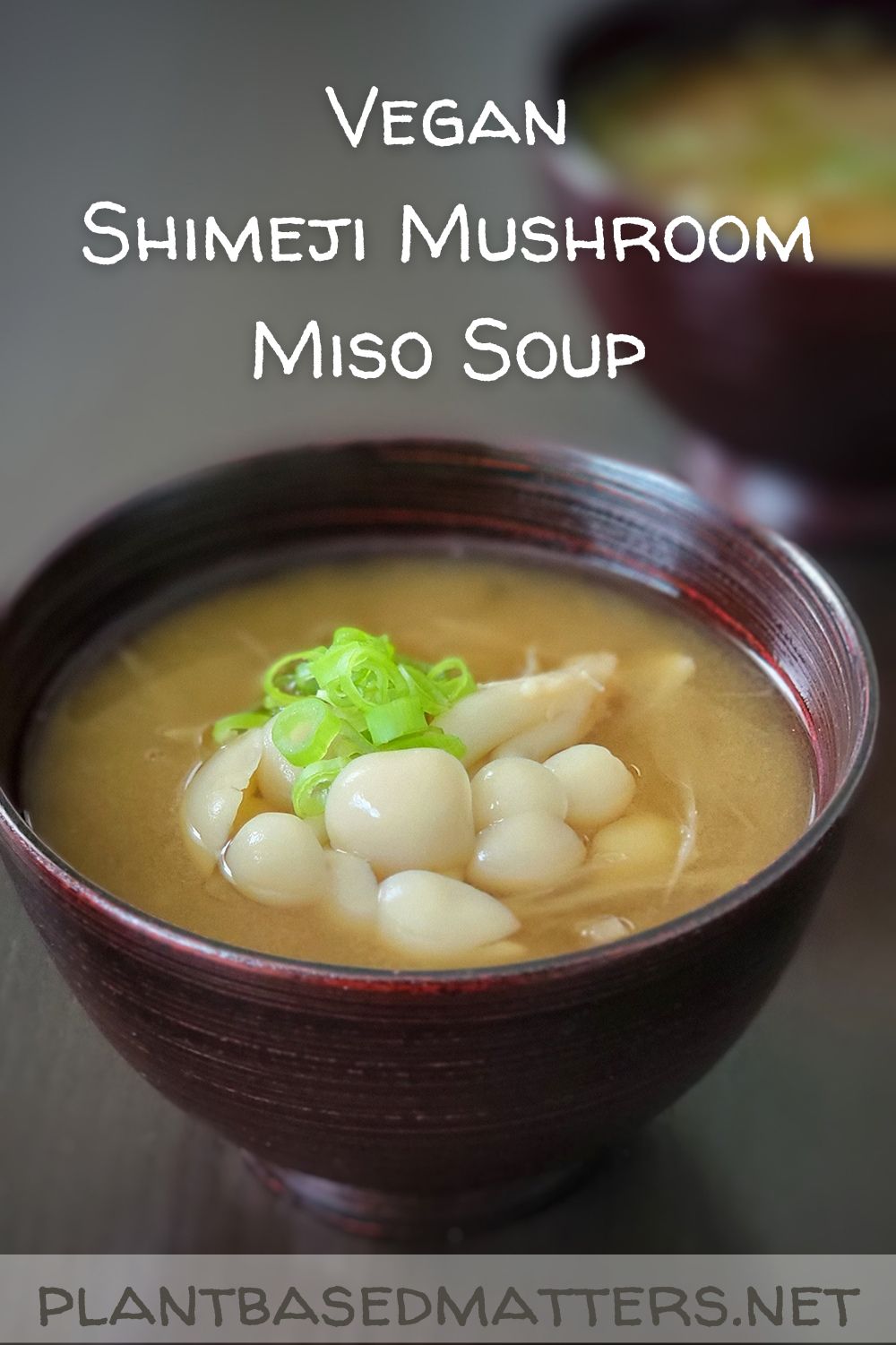
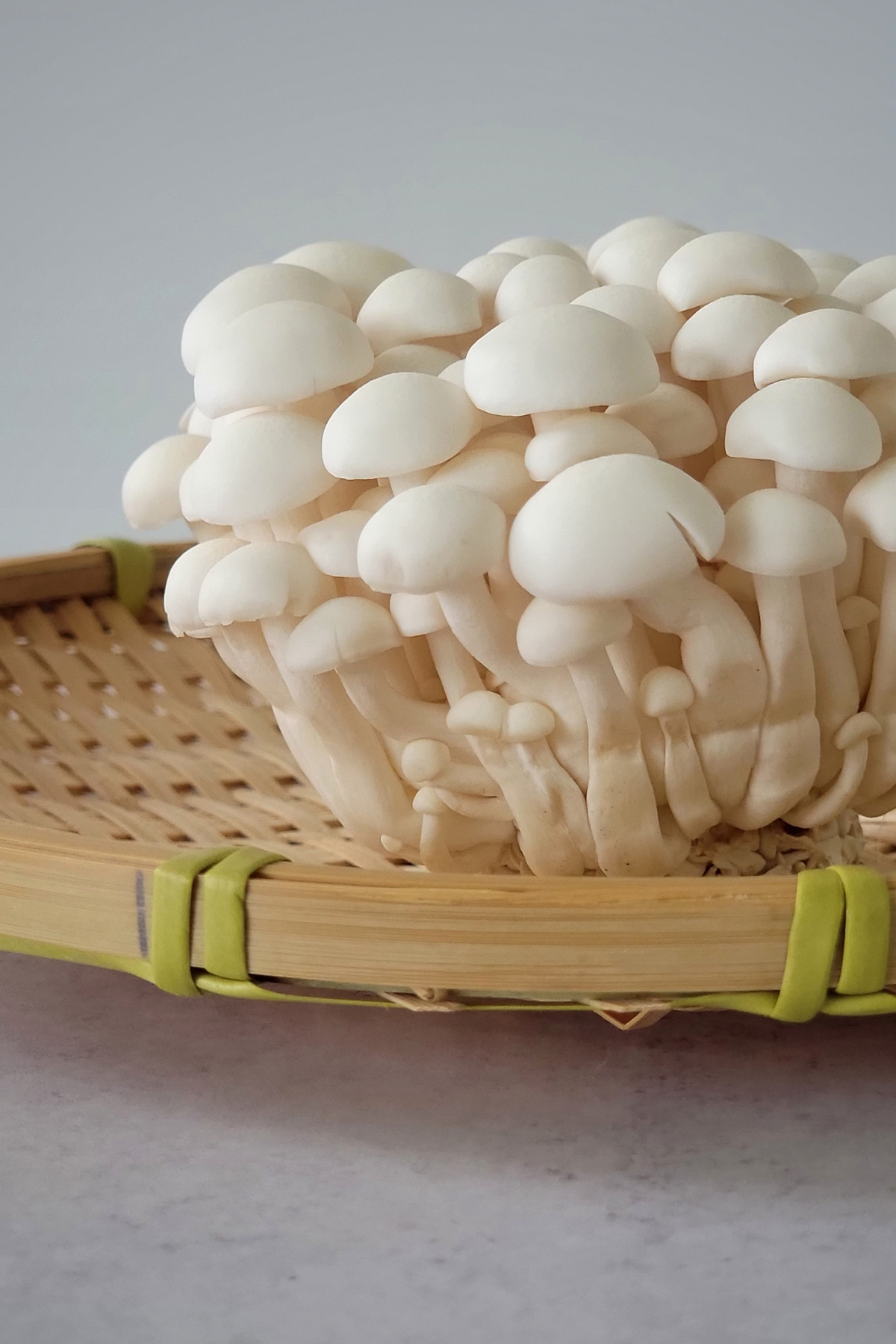
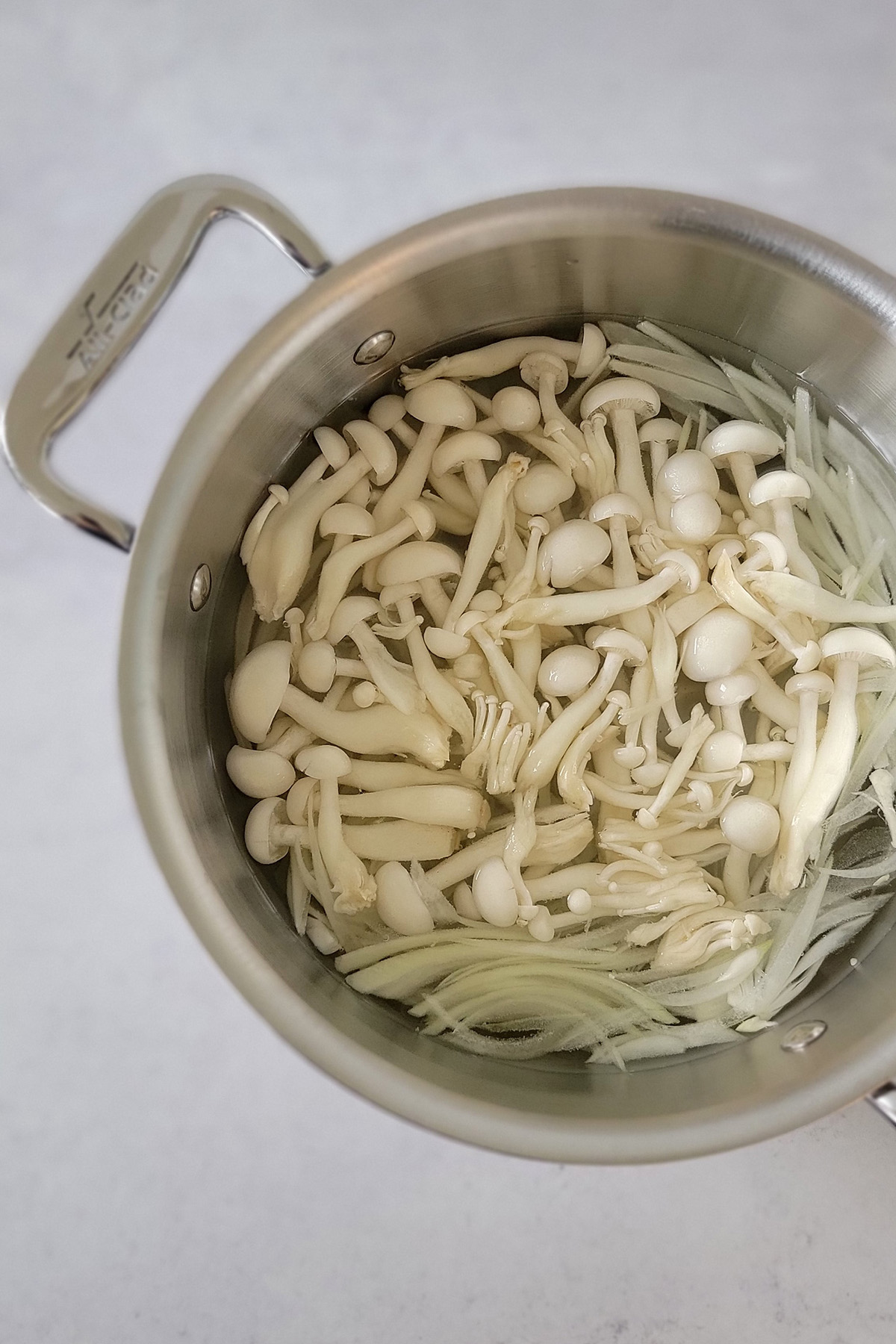
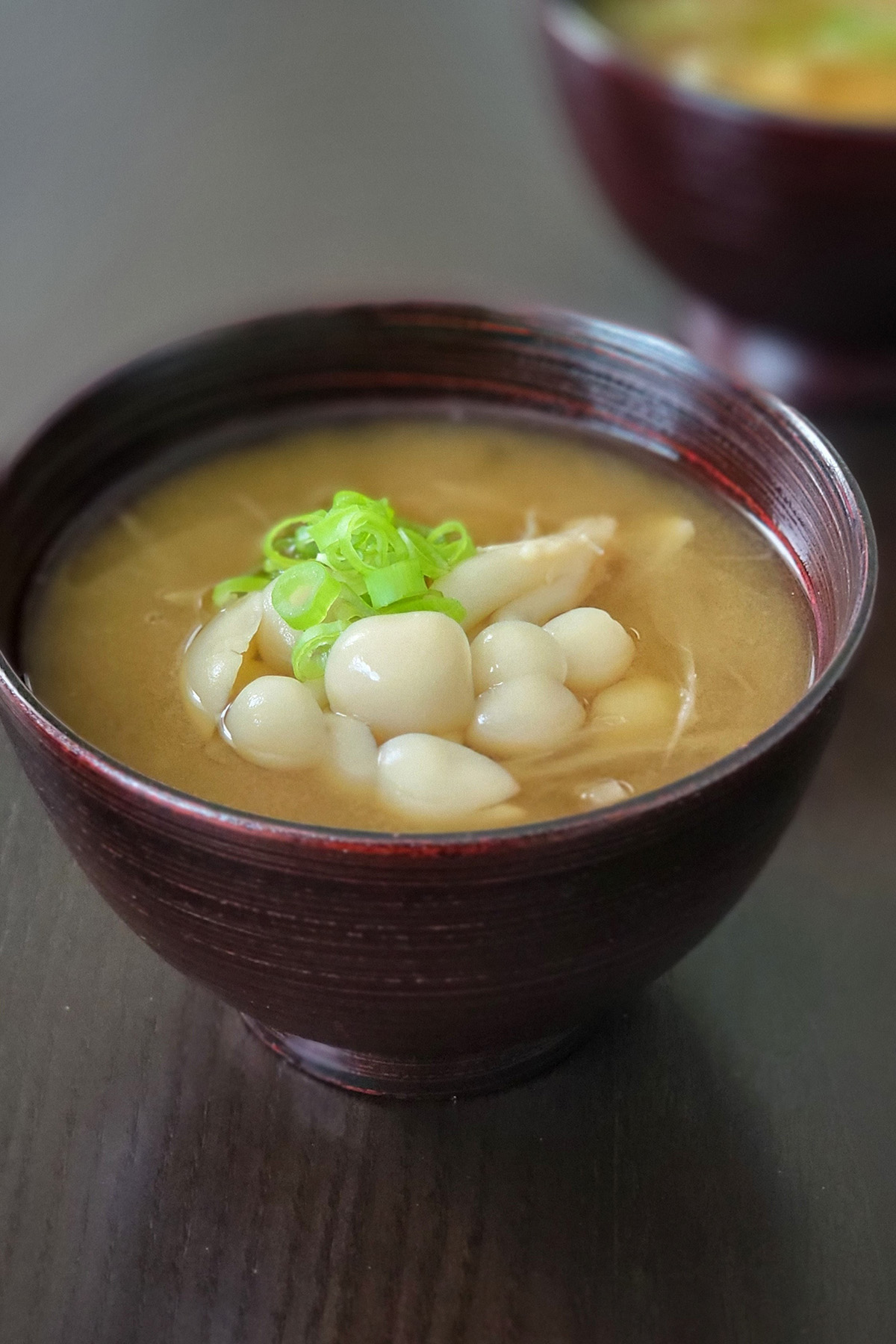

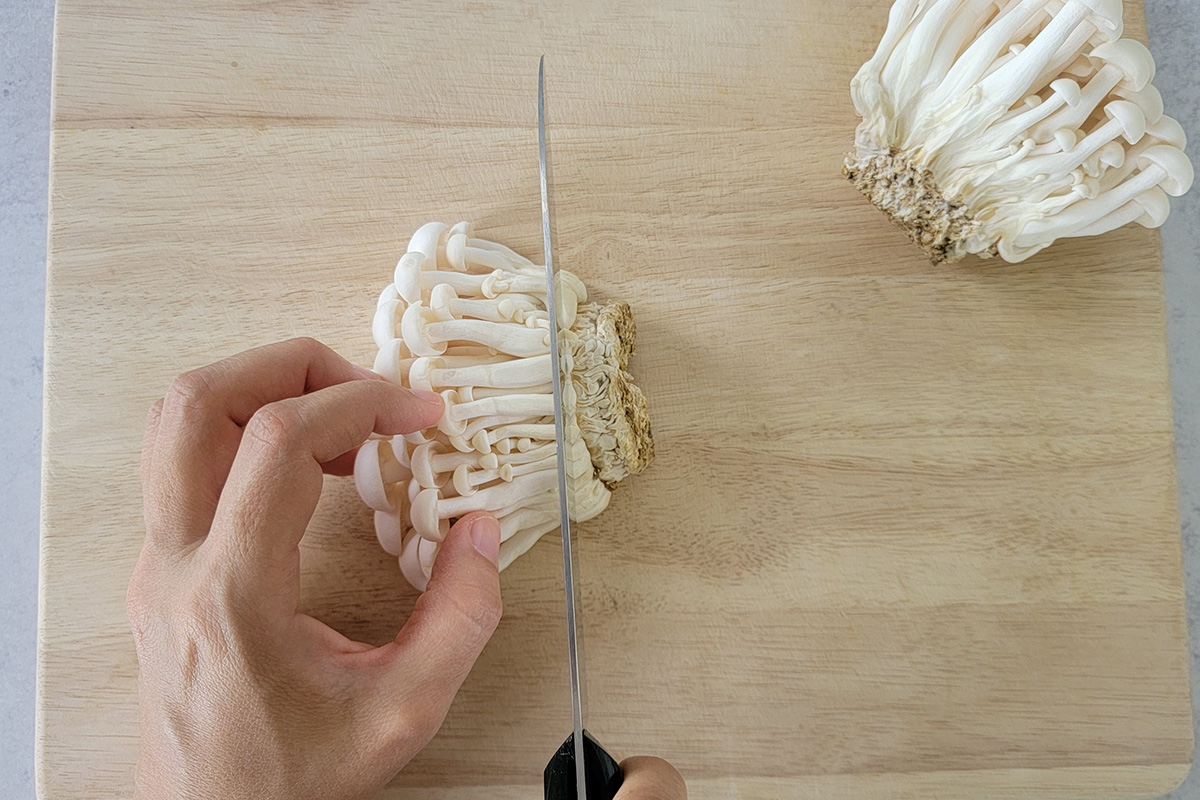
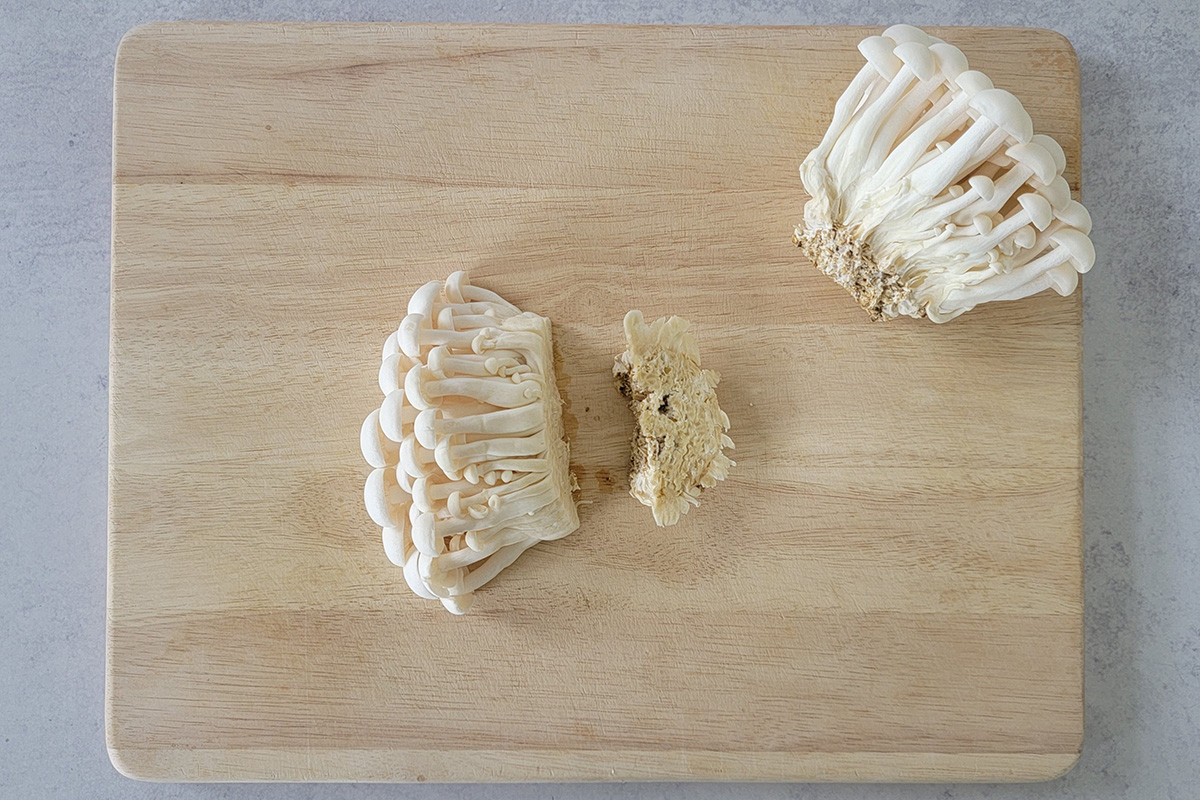
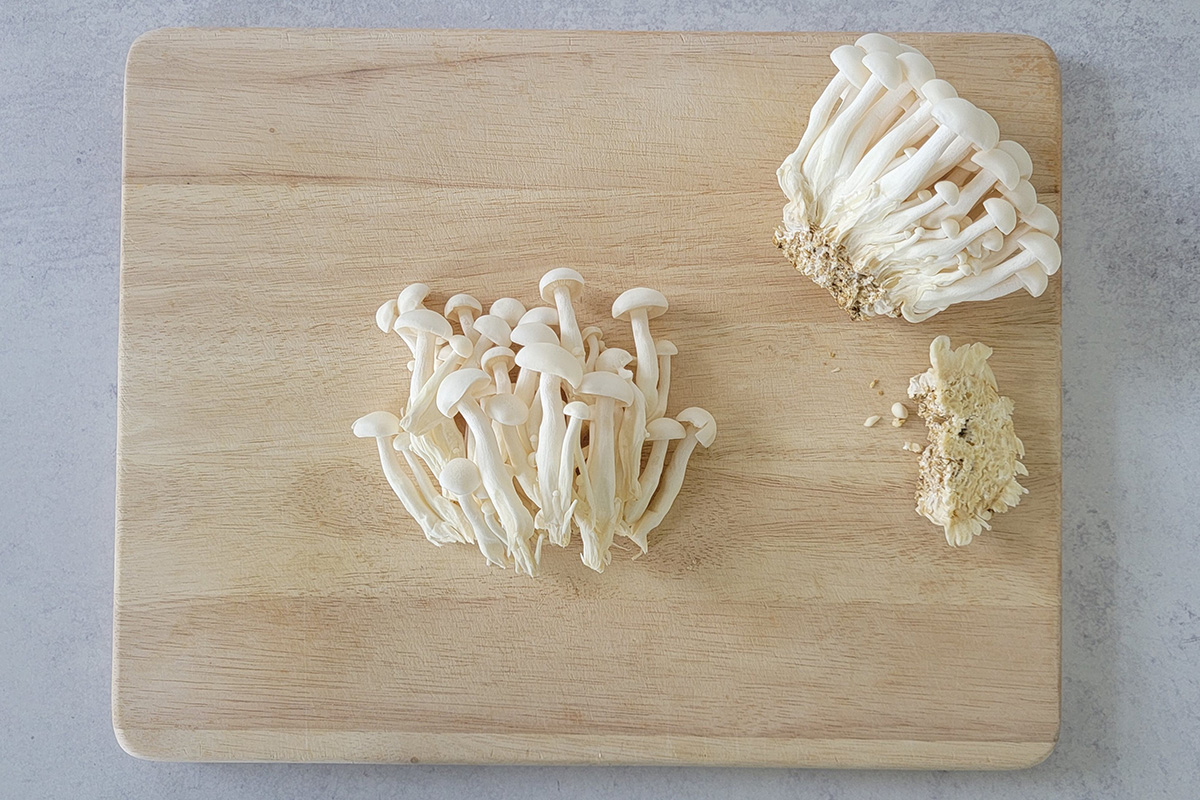
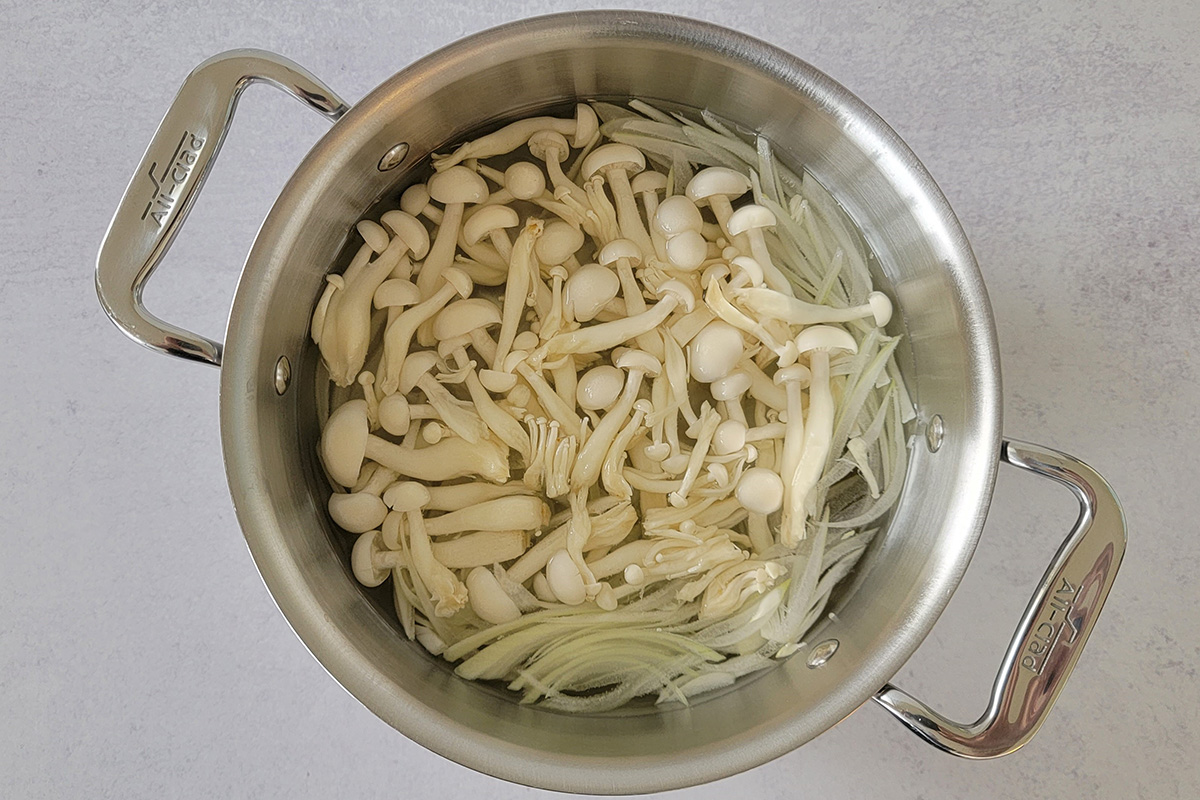
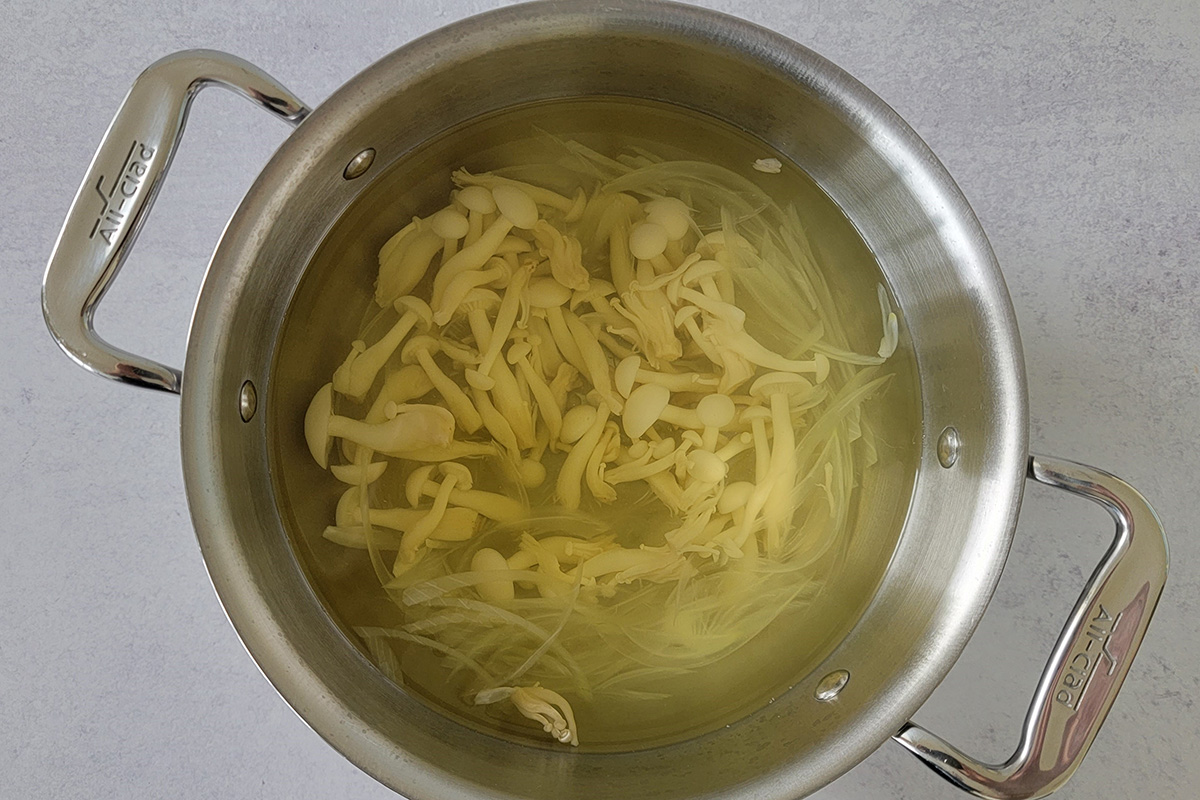
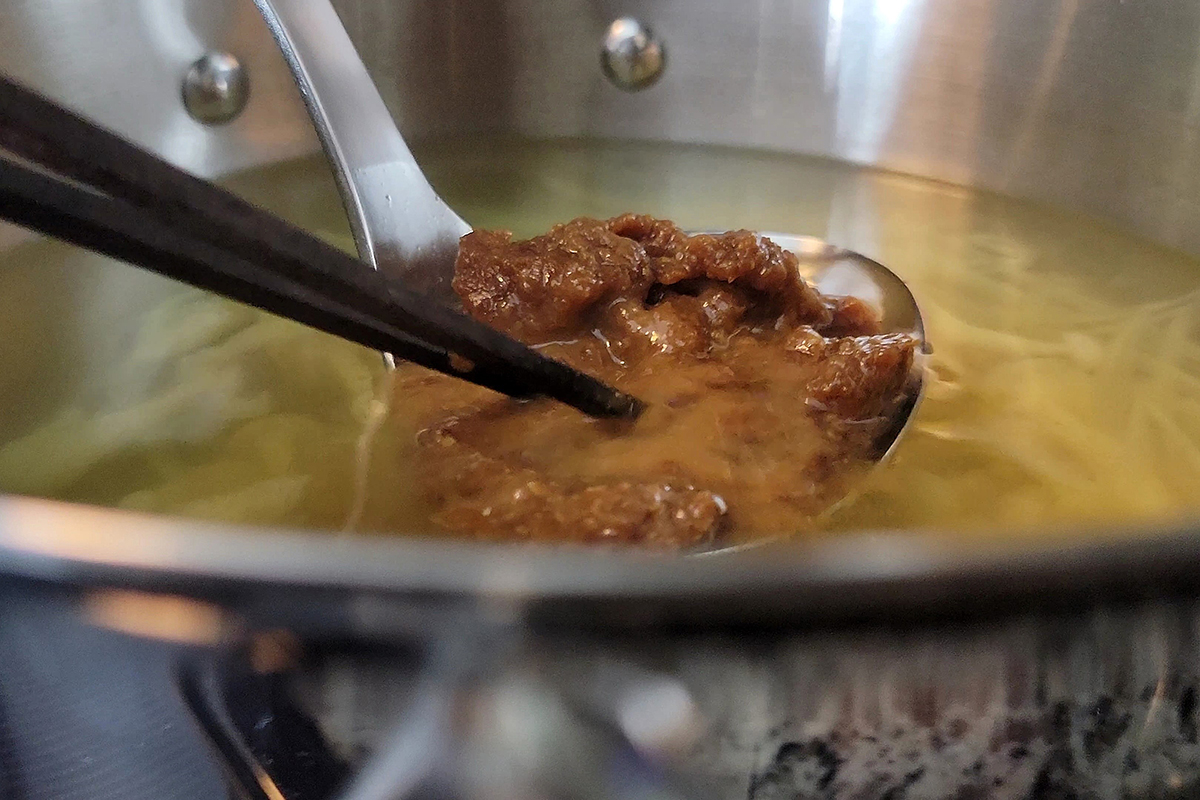
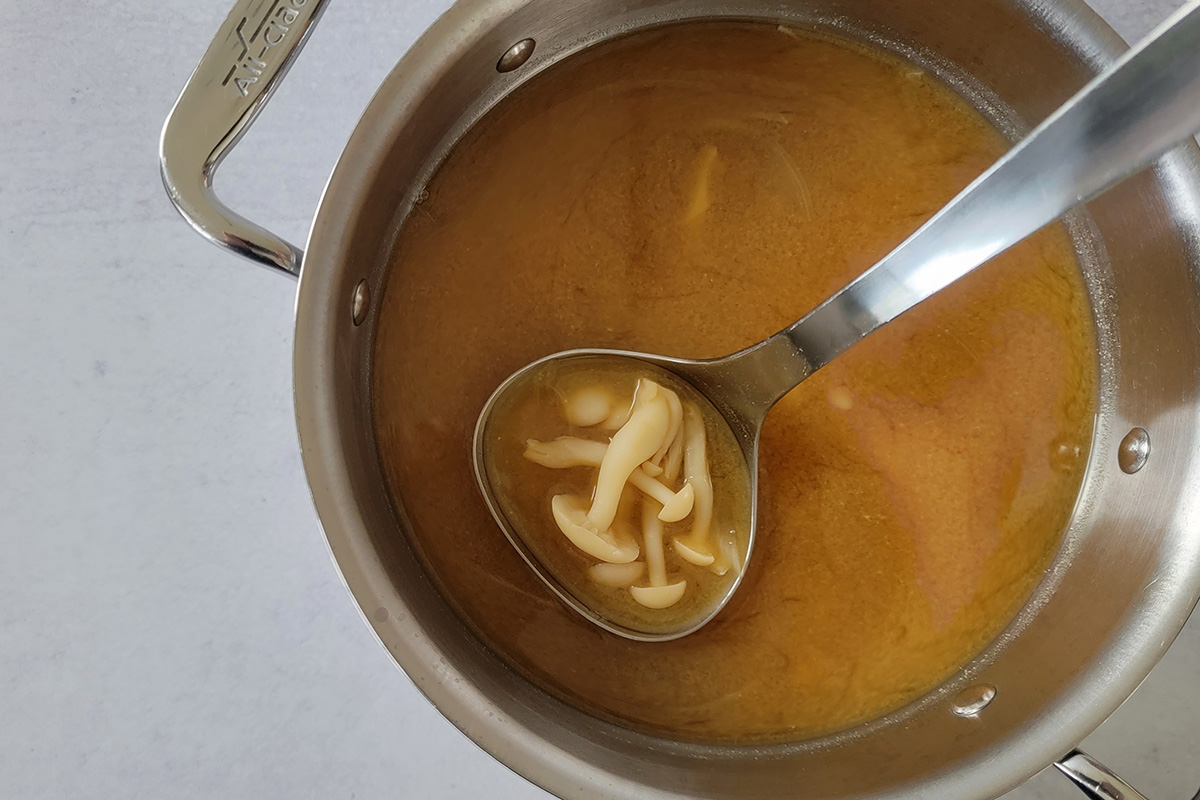
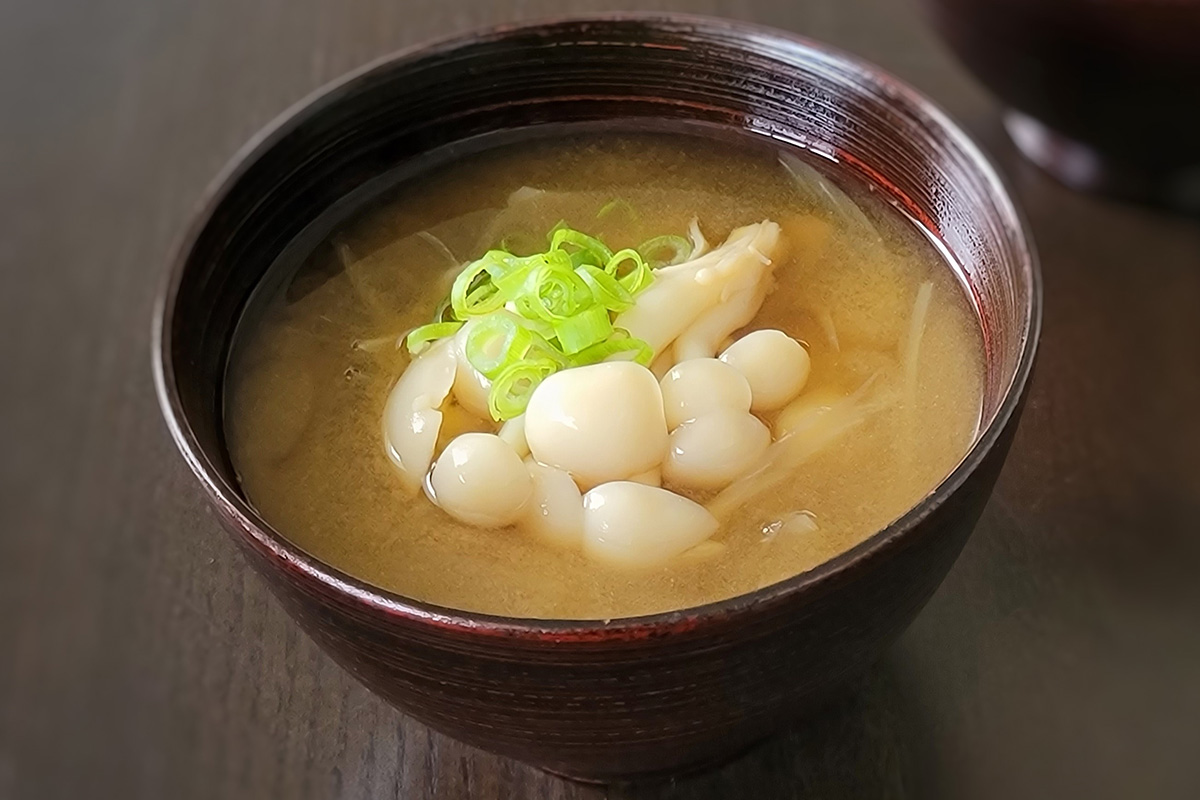
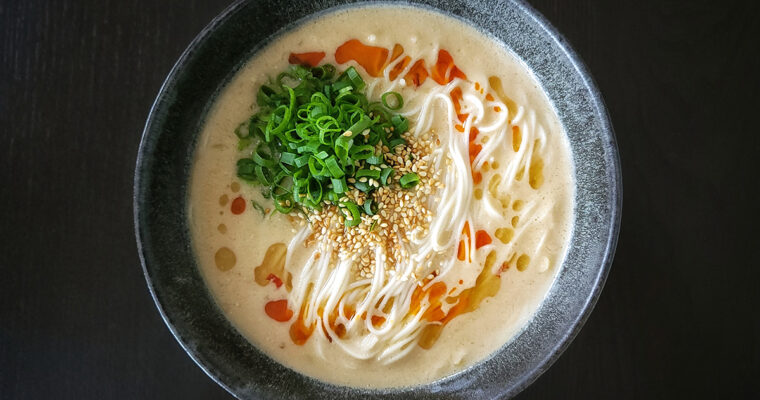
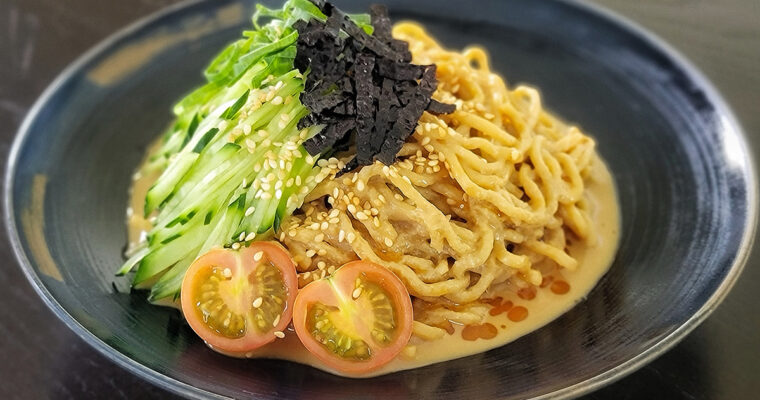


![LINGUINE WITH KALE & LEMON CAPER SAUCE
[ケール、レモン、ケイパーのリングイネ(ヴィーガン)]
By @plantbased_matters
Recipe at plantbasedmatters.net
Here is one of my best vegan pasta creations!
Linguine with Kale & Lemon Caper Sauce is a lemon-aroma-filled light pasta with kale and capers. Don't you love the combination of lemon and capers?
If you're new here, you may think I'm all Japanese/Asian food, but my non-Asian pasta recipes are hidden gems of my recipe collections 🤣 I can't believe how good the Linguine with Kale & Lemon Caper Sauce tastes especially with a drizzle of Meyer Lemon Olive Oil.
Enjoy!](https://plantbasedmatters.net/wp-content/plugins/instagram-feed/img/placeholder.png)
I cooked and cooked and cooked it but it just feels like a bad idea to boil a raw onion ( the apartment smells awful now as well)…nice idea but next time ill go the usual way of getting the harshness out of the onion by sauteing it
Hi Anna,
Thanks for the comment and feedback.
I’m sorry that you didn’t enjoy the smell of “the raw onion” as you described. I use this method of boiling raw onion to extract the flavor all the time so I’m used to the smell and actually love it!
Also, being Japanese, I’m coming from where making miso soup is always done by boiling the raw ingredients in dashi stock or water first then adding miso paste.
That said, I do sometimes sauté veggies in sesame oil when I want to give an added nutty flavor to the miso soup.
Cooking and eating is very personal so if you enjoy the recipe by sautéing veggies first, go ahead and personalize it your way!
Akiko
Hi! I’ve made this recipe a half dozen times or more and LOVE it! The recipe says don’t boil the mushrooms and sliced onion-just take it to the beginning of simmer for just a few minutes, then I turn it off and let it sit. I use sweet onions, not yellow onions, because they are mild and sweet as opposed to stinky and strong. The broth is amazing served with udon noodles. Absolutely healthy and fabulous recipe!
Thank you for the tips! I should try with sweet onions, too. Serving the soup with udon noodles sounds very enticing 🙂
Akiko
I also added udon noodles and a dash of sesame oil, it was good for such a simple recipe!